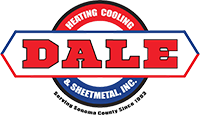You don’t have to purchase a brand new home to get the benefits of owning an energy-efficient certified home. There are definitely personal, financial, and environmental benefits to buying a home that is already energy efficient as well updating the required areas to make your current home just as wonderful.
In order to obtain your home’s certification, there are a few routes to go through ENERGY STAR.
ENERGY STAR is a voluntary program developed by the U.S. Environmental Protection Agency (EPA) that helps businesses and individuals save money and protect our climate through superior energy efficiency. ENERGY STAR certified homes are at least 10% more energy efficient than homes built to code and achieve a 20% improvement on average, while providing homeowners with better quality, performance, and comfort. EPA continues to advance its ENERGY STAR residential new construction program requirements as more rigorous building energy codes are developed and adopted by States.
For New Homes
First, new homeowners can check their home’s eligibility to ENERGY STAR’s national program.
Next, to earn ENERGY STAR certification, a new home or apartment must meet strict energy efficiency requirements established by the ENERGY STAR Residential New Construction program. Program requirements are available for the following states and counties: click here for interactive map.
Certification also requires the completion of the following:
- Rater Design Review Checklist and Rater Field Checklist
- HVAC Design Report
- HVAC Commissioning Checklist
- Water Management System Builder Requirements
- An ENERGY STAR home label and certificate be mailed to builder
- Label should be affixed to circuit breaker box of the home
- Certificate should be distributed to homeowners
For Existing Homes
ENERGY STAR offers free online tools and resources to educate and empower homeowners with unbiased information from experts about actions they can take to improve their home’s energy efficiency. In addition, programs such as Home Performance with ENERGY STAR and ENERGY STAR Verified HVAC Installation help homeowners find qualified participating contractors in their area. Consumers rely on ENERGY STAR as their trusted resource for practical information on saving energy, making use of popular tools such as the ENERGY STAR Home Advisor and the Home Energy Yardstick.
Some other options…
- Leadership in Energy and Environmental Design (LEED) Program for Homes
LEED awards points in energy efficiency and water use, as well as how effectively the structure reduces greenhouse gas emissions. LEED certification also takes into account building materials used and their impact on human health as well as the environment (Modernize). - The Home Energy Rating System (HERS) Index. The Home Energy Rating System (HERS) Index is the industry standard by which a home’s energy efficiency is measured. It’s also the nationally recognized system for inspecting and calculating (a score of 0 to 100) a home’s energy performance. The lower the score the better.
- National Green Building Standard is the only residential green building rating system approved by ANSIm the American National Standards Institute. It pertains to the design and construction of all types of green residential buildings, renovations, and land developments. In addition to focusing on energy efficiency, the National Green Building Standard considers indoor air pollution and other factors affecting health, the operating costs of the home, and how the home contributes to a sustainable lifestyle—taking landscaping and location into consideration according to Modernize.
There are many options out there for all homeowners’ needs and wants. It just takes a little research, talking to professionals, and getting recommendations in order to make your energy-efficient home a reality.
If you are interested in having a more energy-efficient home as it relates to your HVAC system, be sure to contact a professional like Dale Heating Cooling and Sheetmetal, so that you can make the most informed choice for your home’s specific needs.

